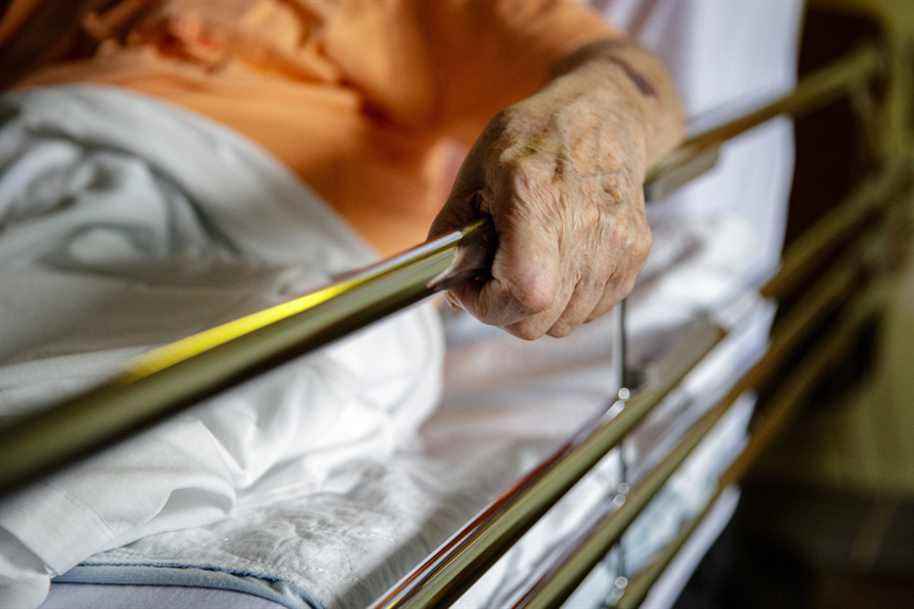From February to September 2020, more than 4,000 CHSLD residents died in Quebec from COVID-19.
In her progress report published in December 2020, the Ombudsperson, Marie Rinfret, already indicated that, in several CHSLDs overwhelmed by the crisis, we “ran out of time to distribute water” to residents and that “ people remained bedridden […] for several days, sometimes for several weeks ”.
At the inquest of Coroner Kamel, the former Minister of Health Danielle McCann and the former Deputy Minister of Health Yvan Gendron declared that as of January 2020, the CEOs of the CISSS and the CIUSSS had been asked of Quebec to update their pandemic plans and prepare their CHSLDs accordingly.
But the minutes of the meetings held in January and February between the Ministry of Health and all the CEOs of the network show that it was not until March 9 that an “update of the plan to fight the pandemic” has been mentioned.
Asked whether their CEO had indeed been invited in January to prepare their pandemic plans, and if so, why their CHSLDs were so poorly prepared, CIUSSS and CISSS du Grand Montréal asked Press to ask the question to the MSSS “out of respect for the current process”.
Coroner Kamel was mandated to investigate deaths at Manoir Liverpool in Lévis, CHSLD des Moulins in Terrebonne, Laflèche in Shawinigan, Yvon-Brunet in Montreal, Ste-Dorothée in Laval and Herron in Dorval, in addition to focus on the national aspect of pandemic management.
The exercise revealed that on March 9, 2020, Quebec received COVID-19 projection scenarios from the National Institute of Public Health of Quebec (INSPQ). According to the worst-case scenario, Quebec would have recorded 35,000 hospitalizations per week while the total number of acute care beds is 18,000. This fear of seeing hospitals overwhelmed with cases has prompted the government to focus its preparation there.
Questions about the guidelines
Coroner Kamel raised several questions about certain directives issued at the start of the crisis. On March 18, 2020, Mr. Gendron wrote for example that transfers of patients from CHSLDs to hospitals should “be avoided”. A directive followed to the letter by several establishments, said Coroner Kamel.
Several representatives of the Ministry of Health affirmed that “this ban was not firm”. But for Mme Kamel, this directive was rather “applied like the Bible”.
On March 18, 2020, Quebec also recommended that doctors turn to telemedicine, for which billing has been authorized. Minister McCann told the coroner that in her mind, telemedicine “was not for CHSLDs”. Coroner Kamel noted, however, that in several of the CHSLDs, doctors had opted for telemedicine in March 2020.
The Dr Vinh-Kim Nguyen, who worked in a CHSLD, shocked the coroner by evoking the word “euthanasia” to speak of the death of certain residents. At the height of the crisis, he said, some patients had been placed on a respiratory distress protocol when they “did not have to go that far.”
The Dr Réjean Hébert reminded us that Quebec was by far the Canadian province with the highest rate of CHSLD deaths during the first wave.

The mask debate
Experts from the INSPQ and Dr Horacio Arruda explained why they only recommended wearing the intervention mask (called “procedure”) in healthcare settings at the beginning of April 2020 and why wearing the N95 mask has long been limited to interventions generating aerosols. The Dr Arruda said he “trusted the experts” of the INSPQ, and that he “took into account the reality”, such as the lack of masks.
An expert from the Robert-Sauvé Research Institute in occupational health and safety, Geneviève Marchand, criticized the fact that the INSPQ does not place enough emphasis, even to this day, on transmission by inhalation. According to her, there was from the start of the pandemic “sufficient data and information at the level of science” to judge that transmission by inhalation was “plausible”. More than 40,000 healthcare workers have been infected with the virus in Quebec to date.
The position of the INSPQ, already briefly presented, will be even more detailed during the testimony of Dr.r Jasmin Villeneuve, scheduled for November 29. This will be one of the last testimonies of the investigation which will end on December 6. Coroner Kamel aims to finish writing her report in the spring of 2022. In all, she will have heard from nearly 70 witnesses.
Health and Welfare Commissioner Joanne Castonguay must also submit her final investigation report by the end of the year. In his preliminary report, Mr.me Castonguay spoke of the first wave of COVID-19 in CHSLDs as “one of the worst crises modern Quebec has ever known”.

